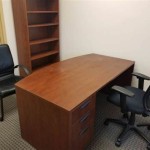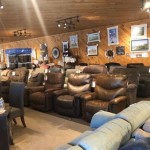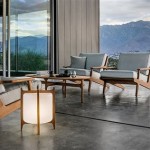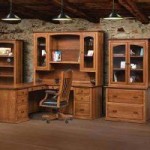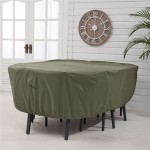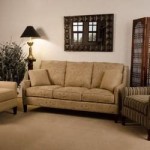Elevating Outdoor Living: Outdoor Furniture on Grass Ideas
Transforming a grassy outdoor space into a comfortable and inviting living area involves careful consideration of furniture choices, layout, and protective measures. Selecting the right outdoor furniture and implementing thoughtful design strategies can create a harmonious blend of nature and comfort, maximizing the enjoyment of outdoor spaces during favorable weather conditions. This article explores various ideas for integrating outdoor furniture onto grass, focusing on factors such as material selection, layout considerations, and maintenance practices.
Material Selection for Longevity and Aesthetics
The longevity and visual appeal of outdoor furniture placed on grass depend significantly on the materials used in their construction. Certain materials are better suited for exposure to moisture and the natural elements commonly encountered in grassy environments. Considerations should include resistance to rot, insect infestation, fading, and overall durability.
Wood Furniture: Wood offers a classic and natural aesthetic, blending seamlessly with the grass. Teak, cedar, and redwood are naturally resistant to decay and insects due to their oils and extractives. Properly sealed and maintained wood furniture can endure outdoor conditions for many years. However, wood requires regular maintenance, including cleaning, staining, or sealing, to prevent warping, cracking, and fading. Softwoods like pine, while less expensive, require more rigorous treatment and may not last as long as hardwoods.
Metal Furniture: Metal furniture, particularly aluminum and wrought iron, provides durability and strength. Aluminum is lightweight, rust-resistant, and requires minimal maintenance. Wrought iron is heavier and more ornate, offering a traditional look. However, wrought iron can rust if not properly coated and maintained. Powder-coated finishes provide an extra layer of protection against corrosion. Cushions and upholstery are essential for comfort when using metal furniture, as metal can become hot in direct sunlight.
Resin and Plastic Furniture: Resin and recycled plastic furniture options are increasingly popular due to their affordability, weather resistance, and low maintenance requirements. These materials are resistant to moisture, UV rays, and pests, making them ideal for prolonged outdoor use. Resin furniture often mimics the look of wood or wicker, providing aesthetic versatility. Recycled plastic furniture is an environmentally friendly option, diverting waste from landfills. While durable, these materials may not possess the same level of aesthetic appeal as wood or metal for some users.
Wicker and Rattan Furniture: Traditional wicker and rattan furniture, made from natural plant fibers, can add a bohemian or rustic touch to outdoor spaces. However, natural wicker is susceptible to moisture damage and is best suited for covered patios or porches. Synthetic wicker, made from resin, offers a durable and weather-resistant alternative, maintaining the aesthetic appeal of natural wicker without the maintenance challenges. Cushions are essential for comfort with both natural and synthetic wicker furniture.
Optimizing Layout and Functionality
Strategic layout design is crucial for maximizing the functionality and enjoyment of outdoor furniture on grass. The arrangement of furniture should consider the size and shape of the space, the intended use of the area, and the flow of traffic. Thoughtful planning can create a seamless transition between indoor and outdoor living spaces.
Defining Zones: Dividing the grassy area into distinct zones for different activities can enhance its usability. A dining zone, equipped with a table and chairs, can be designated for outdoor meals. A lounge zone, featuring comfortable seating such as sofas, armchairs, or hammocks, can be created for relaxation and conversation. A sunbathing zone, with lounge chairs or sunbeds, can be positioned to maximize sunlight exposure. Defining zones helps to organize the space and cater to diverse needs.
Traffic Flow: Ensuring clear pathways between different zones and access points is essential for comfortable navigation. Furniture should be arranged to avoid obstructing walkways and to allow for easy movement throughout the space. Consider the natural flow of traffic and position furniture accordingly. Using stepping stones or pathways can also help to define routes and protect the grass from excessive wear.
Sun and Shade: Consider the position of the sun throughout the day when planning the layout. Provide shaded areas for respite from direct sunlight, particularly during peak hours. This can be achieved through the use of umbrellas, pergolas, shade sails, or strategically planted trees. Conversely, position seating in areas that receive ample sunlight for those who enjoy soaking up the sun's rays. Balancing sun and shade ensures that the outdoor space can be enjoyed comfortably at different times of the day.
Accessorizing with Plants and Décor: Integrating plants and decorative elements can enhance the overall aesthetic appeal of the outdoor space. Potted plants, flower beds, and hanging baskets can add color and texture. Outdoor rugs can define seating areas and provide a soft surface underfoot. Lighting, such as string lights, lanterns, or spotlights, can create ambiance and extend the usability of the space into the evening hours. Selecting accessories that complement the furniture and the surrounding landscape will create a cohesive and inviting outdoor living area.
Furniture Placement for Conversation: Arranging seating in a way that facilitates conversation is vital, especially in lounge zones. A circular or semi-circular arrangement encourages interaction between individuals. Ensure that seating is positioned at a comfortable distance from one another, allowing for easy conversation without straining to hear. Consider incorporating a coffee table or side tables to provide surfaces for drinks and snacks.
Protection and Maintenance Strategies
Maintaining the condition of both the outdoor furniture and the grass beneath it requires proactive protection and regular maintenance. Preventing damage from moisture, pests, and wear and tear is crucial for preserving the longevity and appearance of the outdoor space.
Protecting Furniture from the Elements: Seasonal weather changes can have a significant impact on outdoor furniture. During periods of heavy rain or snowfall, covering furniture with waterproof covers can prevent water damage and prolong its lifespan. Store cushions and pillows indoors when not in use to protect them from moisture and fading. Applying sealant or varnish to wood furniture regularly can help to protect it from moisture and UV damage. Using rust-preventative coatings on metal furniture can prevent corrosion.
Protecting the Grass: Placing furniture directly on grass can lead to compaction and damage. Using protective mats or platforms under furniture can help to distribute weight evenly and prevent the grass from being crushed. Rotating furniture periodically can also help to prevent localized damage. Consider using permeable paving materials, such as gravel or mulch, under furniture to allow water to drain freely and prevent the buildup of moisture. Aerating the grass regularly can improve drainage and promote healthy growth.
Regular Cleaning: Regular cleaning is essential for maintaining the appearance and hygiene of outdoor furniture. Wipe down furniture regularly with a damp cloth to remove dirt and debris. Use mild soap and water to clean more stubborn stains. Avoid using harsh chemicals or abrasive cleaners, as these can damage the furniture's finish. Clean cushions and pillows regularly according to the manufacturer's instructions. Pressure washing can be used to clean some types of furniture, but caution should be exercised to avoid damaging the surface.
Pest Control: Outdoor furniture can attract pests such as insects, rodents, and birds. Take steps to minimize pest activity by keeping the area clean and free of food debris. Use insect repellent or traps to control insect populations. Ensure that furniture is properly sealed to prevent pests from nesting inside. Consider using natural pest control methods, such as planting pest-repelling plants or using organic pest control products.
Addressing Wear and Tear: Over time, outdoor furniture may experience wear and tear. Inspect furniture regularly for signs of damage, such as cracks, splits, or rust. Repair or replace damaged components promptly to prevent further deterioration. Tighten loose screws and bolts to maintain the stability of the furniture. Reupholster or replace worn cushions to maintain comfort and appearance. Addressing wear and tear promptly can extend the lifespan of outdoor furniture and maintain its aesthetic appeal.
Implementing these material selection, layout optimization, and protection and maintenance strategies allows homeowners to create inviting and durable outdoor living spaces on grass, maximizing enjoyment of their yards while preserving the health and vitality of the underlying landscape.

The Best Outdoor Furniture To Suit Your Garden Type Groby Landscapes

Example Of Patio Furniture On Grass Aka Before After Pics

Can You Put Garden Furniture On Grass What To Under

Yes There Are Ways To Put Patio Furniture Directly On Grass
6 Backyard Retreat Ideas Arcbazar

Six Super Stylish Patio Furniture On Grass Ideas For Yards Of All Sizes Analytical Mommy Llc

Example Of Patio Furniture On Grass Aka Before After Pics

Can You Put Garden Furniture On Artificial Grass Here S How

Six Super Stylish Patio Furniture On Grass Ideas For Yards Of All Sizes Analytical Mommy Llc

Patio And Outdoor Furniture Upholstery All In One Up Holstery
See Also

